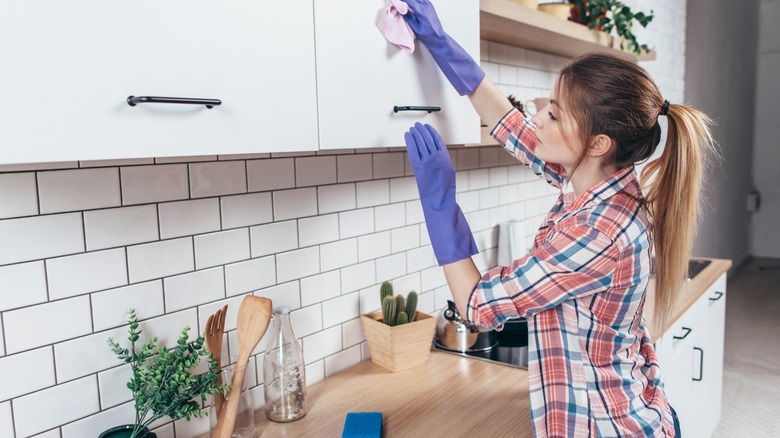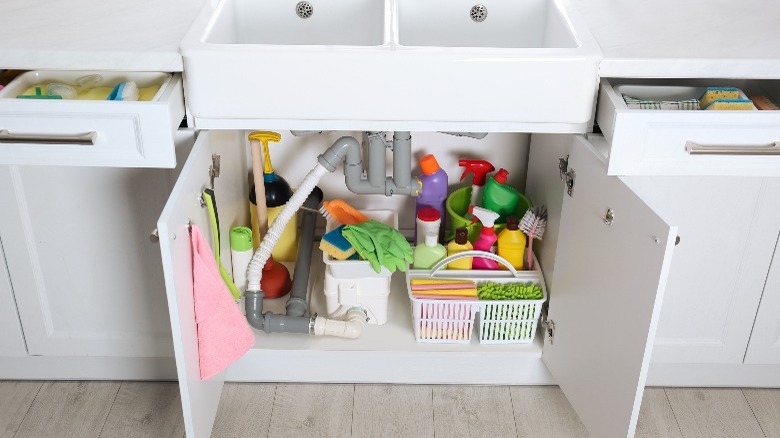This Cleaning Hack For Spotless Cabinets Uses An Item From Your Laundry Room
While it's almost second nature to regularly wipe down kitchen counters and mop the kitchen floor, kitchen cabinets often don't receive the same level of attention. However, your cabinets are also very prone to accumulating grease, food splatters, and greasy fingerprints. Delaying cleaning your kitchen cabinets can not only detract from the overall aesthetic of your kitchen but also allow stains to build up over time, becoming a potential breeding ground for bacteria. Need to clean your kitchen cabinet but don't have a cleaning product mild enough to not damage your cabinets? Don't worry. You can use the laundry detergent from your laundry room!
Laundry detergent is gentle enough not to harm the cabinet's finish yet effective enough to tackle built-up stains and food splatters on most cabinet types, including painted and finished wood, metal, vinyl, and laminate. To create a cleaning solution, mix one part of liquid laundry detergent with two parts of warm water. Dampen a cloth in this mixture, ensuring it's moist but not excessively wet. Start wiping the cabinets from the top, giving extra attention to areas with visible stains, as well as handles and knobs — don't forget the bottom, sides, and edges of your cabinets! After cleaning, go over the cabinets with a cloth dampened with plain water to remove any soap residue. Finally, dry the surfaces with a microfiber cloth.
How often should you clean your kitchen cabinet?
Ideally, you should clean your kitchen cabinets at least once a week if you use your kitchen daily. Pay special attention to cabinet hardware like handles, pulls, and knobs, as they are frequently touched. Aside from regularly wiping the exterior of your kitchen cabinets, you should also make deep cleaning your kitchen cabinets a priority, which you should do every three to five months. This helps to prevent dust accumulation, stain buildup, pest infestation, and mold growth inside the cabinets. Deep cleaning not only keeps your kitchenware clean but also enables you to discard expired food items.
For the cleaning process, start from the top cabinets and work your way down. You can empty one cabinet at a time or tackle several if you're also reorganizing. Wipe the interiors with a damp cloth, using a brush for hard-to-reach spots and crevices. Afterward, rinse with a clean, damp cloth and finish by buffing with a dry cloth. After cleaning, it's essential to leave the cabinets open for at least an hour to allow them to dry thoroughly before replacing their contents. Ensuring the interiors are completely dry is crucial, as lingering moisture can damage the cabinet's finish and promote mold growth.

